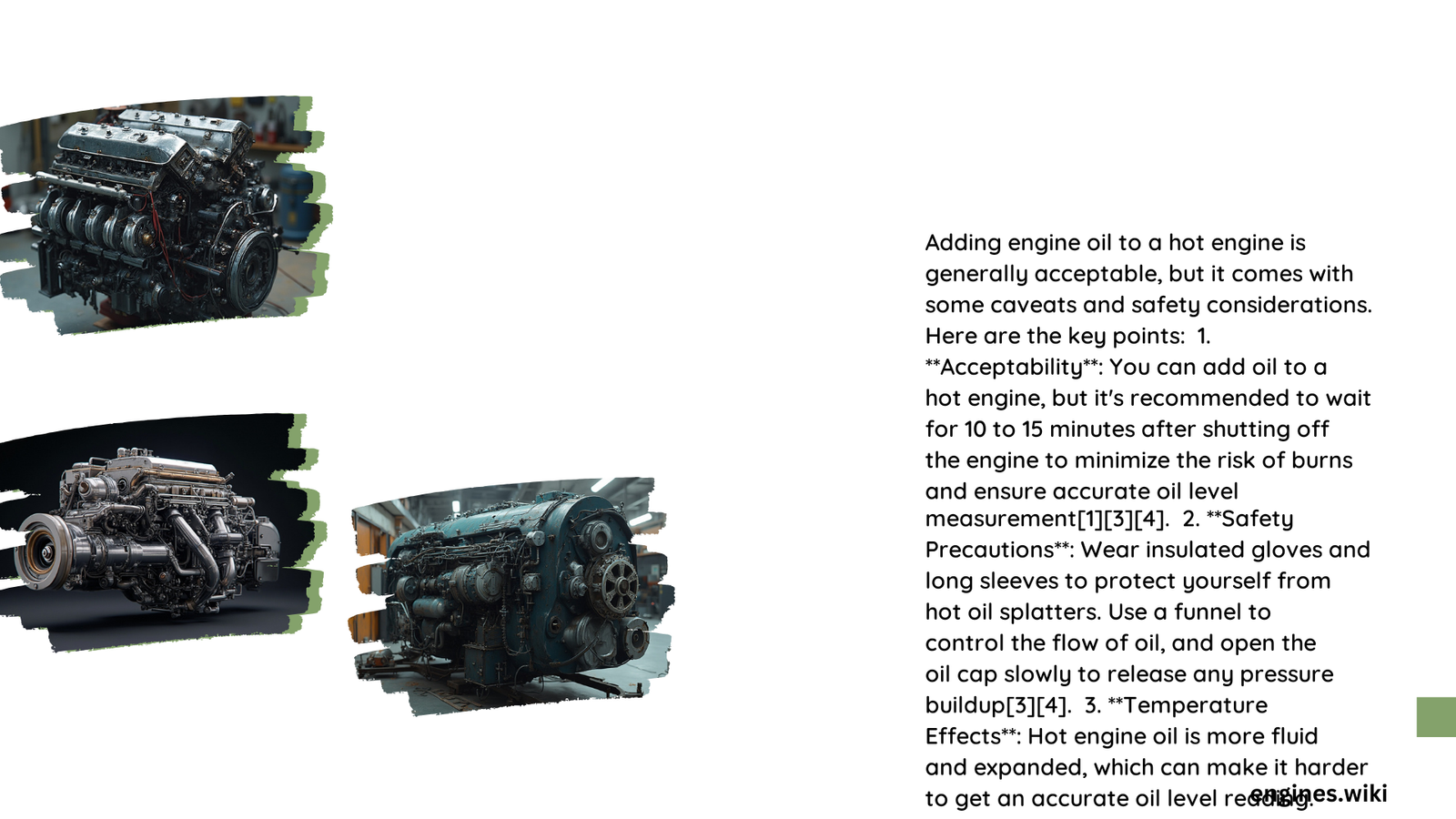Adding engine oil to a hot engine can be dangerous and potentially harmful to your vehicle’s performance. Vehicle experts strongly advise against pouring oil into an engine that’s still radiating heat, as this practice can lead to thermal shock, inaccurate oil measurements, potential burns, and significant engine component damage. Understanding the risks and proper procedures is essential for maintaining your vehicle’s longevity and ensuring safe maintenance practices.
What Happens When You Add Oil to a Hot Engine?
Why Is Adding Oil to a Hot Engine Risky?
When you attempt to add engine oil to a hot engine, several critical risks emerge:
- Thermal Shock Potential
- Cold oil introduced to hot engine components can cause sudden temperature variations
- Potential for microscopic cracks in engine block or critical metal parts
-
Increased risk of long-term structural damage
-
Oil Viscosity Complications
- High temperatures alter oil’s molecular structure
- Reduced lubricating capabilities
- Potential for accelerated engine wear
| Risk Factor | Potential Consequence | Severity |
|---|---|---|
| Thermal Shock | Engine Block Damage | High |
| Oil Breakdown | Reduced Lubrication | Medium |
| Temperature Variance | Inaccurate Oil Measurement | Low-Medium |
How Long Should You Wait Before Adding Oil?
Automotive experts recommend:
– Wait 10-15 minutes after turning off the engine
– Allow engine temperature to stabilize
– Ensure safe handling temperature
– Use protective gloves when checking oil levels
What Are the Safest Practices for Oil Addition?
Recommended Steps
- Park vehicle on level ground
- Engage parking brake
- Turn off engine completely
- Wait recommended cooling period
- Use clean, manufacturer-recommended oil
- Check oil level with dipstick
- Add oil slowly using a clean funnel
Can Temperature Affect Oil Performance?
Temperature Impact on Oil:
– Hot oil becomes thinner, reducing lubrication effectiveness
– Cold oil maintains higher viscosity
– Ideal oil addition occurs when engine is warm but not hot
What Tools Protect You During Oil Addition?
Essential Safety Equipment:
– Heat-resistant gloves
– Safety glasses
– Clean funnel
– Manufacturer-recommended oil
– Clean rags
– Proper lighting
Professional Recommendations

Vehicle maintenance professionals unanimously agree that patience is key when adding engine oil. The few minutes spent waiting can prevent potentially expensive repairs and ensure optimal engine performance.
Key Takeaways
- Never add oil to an extremely hot engine
- Allow 10-15 minutes cooling time
- Use manufacturer-recommended oil
- Check oil levels carefully
- Prioritize safety over speed
Warning Signs of Improper Oil Addition
Red Flags to Watch:
– Unusual engine noise
– Decreased performance
– Oil leaks
– Burning smell
– Dashboard warning lights
Final Advice
While the temptation might exist to quickly top up your engine oil, taking those extra moments to ensure safe, proper addition can save significant time and money in potential repairs.
References:
– SAE International Oil Viscosity Standards
– Automotive Maintenance Guidelines
– Engine Oil Technical Resources
